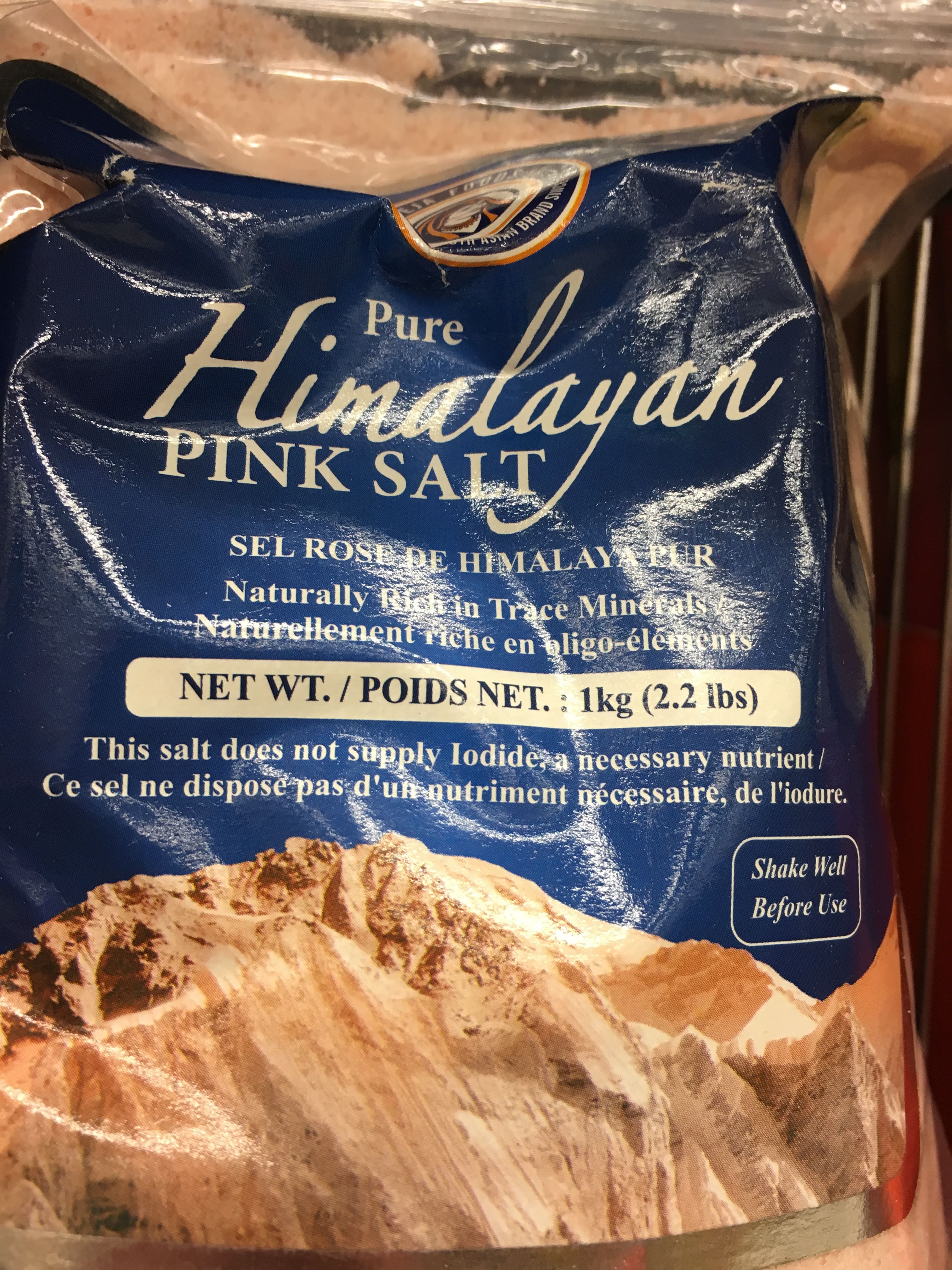
To avoid the mind-boggling array of products in grocery stores, I either resort to buying the same products that I have used before or look for specific cues such as the color of the packaging or words like eco, good, fair trade, or healthy. Our eyes can only scan so much because of information overload. According to the International Food Information Council Foundation’s (IFIC) 2017 Food and Health Survey, almost half are unable to identify a single food or nutrient associated with the benefits.
We have another set of eyes at our disposal – our smartphones. About 36% of the world’s population uses smartphones. I mostly use a smartphone in a grocery aisle to check my to-buy list or to call. I recently also used my phone to take a picture of a Himalayan Salt package to show a friend how it doesn’t supply iodide. But, that’s about it. I feel guilty for using smartphone around because it invades privacy, but I shouldn’t feel guilty to use it to make better choices for me and my family and our environment.

Apps are now available for users to make better choices for a healthier lifestyle as well as to give them a chance to protect our environment. These apps are like little orbuculums under your glass screens. They provide ingredient analysis and nutritional information, to make better choices for your future. I’ve made a list below, but apps can be geographically limited, which means that you will neither be able to download it on your smartphone nor can you see products that are locally available. Fret not, some of these apps will allow you to enter products and all their ingredients into their database.
- Customize your profile based on your own lifestyle and diet.
- For food and cosmetics
- Scan barcode, enter EAN number
- Find out whether the products are vegan, vegetarian or gluten- or lactose-free
- Offers information such as palm oil, microbeads, nanoparticles, parabens, paraffins, too much sugar, etc.
- Helps you if you have an allergy to something.
- For food and cosmetics
- Scan a barcode, search by name or browse by category
- Gives you an easy-to-understand 1-10 score (1 being the best!).
- Provides health tips
- For food only
- Tracks calories, sleep etc.
- Scan barcode
- Provides information on added sugars, artificial sweeteners such as aspartame, trans fats, high fructose corn syrup, MSG, controversial food colourings, GMO – genetically modified organisms (premium feature), additives and preservatives.
- For food only
- Similar to CodeCheck
- Allows you to share your food picks with friends and family
- Create food goals.
- For food only
- Provides information about Fair Trade products
- Shows you where your food was made
- Collaborative, free, open database
- Compare products.
- For seafood only
- Offers recommendations to help you choose ocean-friendly seafood at your favourite restaurants and stores.
- For food only
- Ranks the safety of food additives such as acetic acid, yellow prussiate of soda etc.
- Unable to find the app, but their website contains all the information.
With volumes of digestible information now available at our fingertips, it is also important to factor people’s perceptions of local food environments and how it influences their abilities to eat healthily. A 2016 research done in Alberta, Canada, shows that while availability and access to food outlets influence healthy eating practices, these factors may be eclipsed by other non-physical environmental considerations, such as food regulations and sociocultural preferences. This study identifies a set of meta-themes that summarize and illustrate the interrelationships between environmental attributes, people’s perceptions, and eating behaviours:
- availability and accessibility are interrelated and only part of the healthy eating equation
- local food is synonymous with healthy eating
- local food places for healthy eating help define community identity
- communal dining (commensality) does not necessarily mean healthy eating
- rewarding an achievement or celebrating special occasions with highly processed foods is socially accepted
- food costs seemed to be driving forces in food decisions
- macro-environmental influences are latent in food decisions.
How comfortable are you using these apps? Will you use them? Have you used them? If not, why not? How far do you go or are willing to go to make better choices? Or do you hope that you will simply stumble upon a better choice? While we can reduce exposure to bad elements by cooking more at home, our lifestyle doesn’t necessarily always allow it. Yet, here we are.
References:
https://www.dw.com/en/doing-your-bit-code-checking-in-the-store/av-47222771
https://www.techlicious.com/guide/apps-for-making-healthy-food-choices/
Nice Post
LikeLike
Thanks, Swapnil! Have you tried any of these apps?
LikeLike